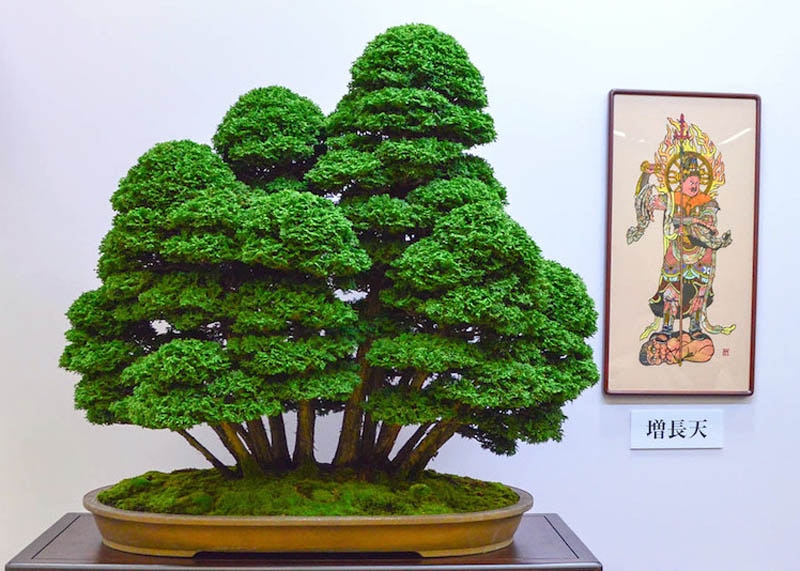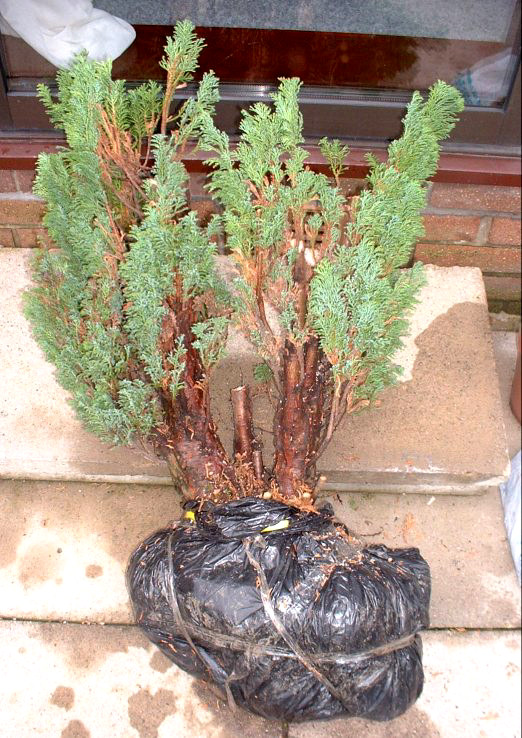The Sawara Cypress Bonsai tree requires regular watering and indirect sunlight. Prune it to maintain its shape and health.
The Sawara Cypress Bonsai tree, known for its lush green foliage, is a popular choice among bonsai enthusiasts. This tree thrives in well-draining soil and benefits from consistent watering, ensuring the soil remains slightly moist. Its preference for indirect sunlight makes it ideal for indoor cultivation, where it can receive ample light without direct exposure.
Regular pruning helps maintain its compact size and encourages healthy growth. Feeding it with a balanced fertilizer during the growing season supports its overall vitality. With proper care, the Sawara Cypress Bonsai tree can be a stunning and enduring addition to any bonsai collection.
Introduction To Sawara Cypress Bonsai
The Sawara Cypress bonsai tree comes from Japan. It thrives in cool climates and moist soils. This tree has been cultivated for centuries. Japanese gardens often feature this bonsai tree. It symbolizes peace and harmony. Bonsai enthusiasts love its delicate foliage.
Sawara Cypress has fine, feathery leaves. The leaves turn golden in fall. This bonsai tree grows slowly. It can live for many years. Its bark is reddish-brown and flaky. The tree’s branches spread gracefully. Its small size makes it perfect for bonsai.

Credit: www.bonsaiempire.com
Choosing The Right Sawara Cypress
Select healthy specimens with bright green leaves. Avoid trees with brown or yellow spots. Check the roots. Strong roots mean a healthy tree. The trunk should be firm and straight.
Small sizes are best for beginners. Medium sizes suit experienced growers. Large sizes need more space and care. Choose a size that fits your skill level.
Optimal Growing Conditions
Sawara Cypress Bonsai trees love bright light. Place the tree near a window. It needs at least six hours of sunlight daily. Avoid putting it in direct sunlight all day. Too much direct light can burn the leaves.
Ideal temperature for Sawara Cypress is between 60°F to 75°F. Keep the tree away from cold drafts. High humidity is also important. Use a humidity tray or mist the tree often. Avoid placing the tree near heaters or air conditioners. These can dry out the air.

Credit: bonsai4me.com
Watering Techniques
The Sawara Cypress bonsai tree loves moisture. Water the tree every day. Make sure the soil is damp. Never let the soil dry out. Water more during hot weather. Less water is needed in winter. Use a spray bottle for a gentle mist.
Look for yellow leaves. This means the tree has too much water. Roots may rot if the soil is always wet. Smell the soil; it should not stink. Mushy roots are a bad sign. Ensure the pot has good drainage. Water only when the top soil is dry.
Soil And Repotting
Sawara Cypress bonsai trees need the right soil mix. A well-draining mix is essential. Use a combination of Akadama, pumice, and lava rock. These materials provide the best environment. They help with water retention and root growth. Ensure the soil is not too dense. Air should flow easily through it.
Repot your Sawara Cypress bonsai every 2-3 years. Early spring is the best time for repotting. Carefully remove the tree from its pot. Trim the roots to encourage new growth. Place the tree in fresh soil. Ensure the new pot has good drainage holes. Water the tree well after repotting.
Pruning And Shaping
Prune your Sawara Cypress bonsai tree regularly. Use clean, sharp scissors. Cut off dead or weak branches first. Always leave some green growth on each branch. This helps the tree stay healthy. Avoid pruning more than one-third of the tree at a time. This prevents stress and damage. Check your tree every few weeks. Trim new growth to keep the shape.
Use wire to shape branches. Choose the right thickness of wire. Wrap the wire around the branch gently. Bend the branch slowly into the desired shape. Keep the wire on for a few months. Remove the wire carefully to avoid damage. Repeat the process if needed. Regularly check for wire marks on the branches. Adjust if necessary.
Fertilization Guidelines
Use organic fertilizers for your Sawara Cypress bonsai. These provide a slow release of nutrients. Liquid fertilizers are also good. They are easy to apply and absorb quickly. Balanced fertilizers with equal parts nitrogen, phosphorus, and potassium work best. Avoid using chemical fertilizers. They can harm the tree if overused.
Fertilize your bonsai tree once a month. Do this during the growing season, from spring to fall. Reduce fertilizing in winter. The tree rests during this time. Never fertilize a dry tree. Always water it first. This prevents root burn. Follow the instructions on the fertilizer package.

Credit: scratchbonsai.wordpress.com
Pest And Disease Management
Sawara Cypress Bonsai trees can attract pests. Aphids and spider mites are common pests. These pests can cause damage to the tree. They suck the sap from the leaves. This weakens the tree over time.
Check the tree regularly for pests. Look under the leaves and around the branches. Use a gentle spray of water to remove pests. Neem oil is also effective in controlling pests. Always follow the instructions on the label.
Diseases can also affect your Sawara Cypress Bonsai. Root rot is a common disease. It happens when the soil is too wet. Make sure the soil drains well. Fungal infections can also occur. They often show up as spots on the leaves.
To prevent diseases, keep the tree healthy. Provide enough light and water. Prune the tree regularly to allow air circulation. If you see signs of disease, act quickly. Remove affected parts and use a suitable fungicide.
Seasonal Care Tips
Water your Sawara Cypress bonsai regularly. Ensure the soil remains moist but not soggy. Place the tree in a spot with bright, indirect light. Fertilize every two weeks with a balanced fertilizer. Prune new growth to maintain its shape. Check for pests like spider mites and aphids. Use organic insecticides if needed. Rotate the tree to ensure even light exposure.
Reduce watering frequency as the tree’s growth slows. Ensure the soil is slightly dry between waterings. Keep the bonsai in a cool, bright place indoors. Avoid placing it near heaters or vents. Fertilize once a month with a low-nitrogen fertilizer. Protect from frost by using a cold frame or bringing it indoors. Monitor for any signs of disease or pests.
Troubleshooting Common Issues
Yellowing leaves often point to overwatering or poor drainage. Ensure the soil is moist, not soggy. Check the pot for proper drainage holes. Use well-draining soil to avoid waterlogging. Yellow leaves might also be due to nutrient deficiencies. Feed your bonsai with a balanced fertilizer. Avoid direct sun for too long, it can cause stress.
Stunted growth can be a sign of root problems. Roots might be bound or damaged. Re-pot the bonsai to a larger container if needed. Ensure the plant gets adequate sunlight and proper nutrients. Regular pruning helps to encourage growth. Inspect for pests that could hinder growth.
Conclusion
Caring for your Sawara Cypress bonsai tree brings joy and tranquility. Follow the steps mentioned for a healthy tree. Regular watering, proper sunlight, and suitable soil are key. Pruning and wiring will maintain its shape beautifully. With dedication, your bonsai will thrive and become a stunning centerpiece in any space.

